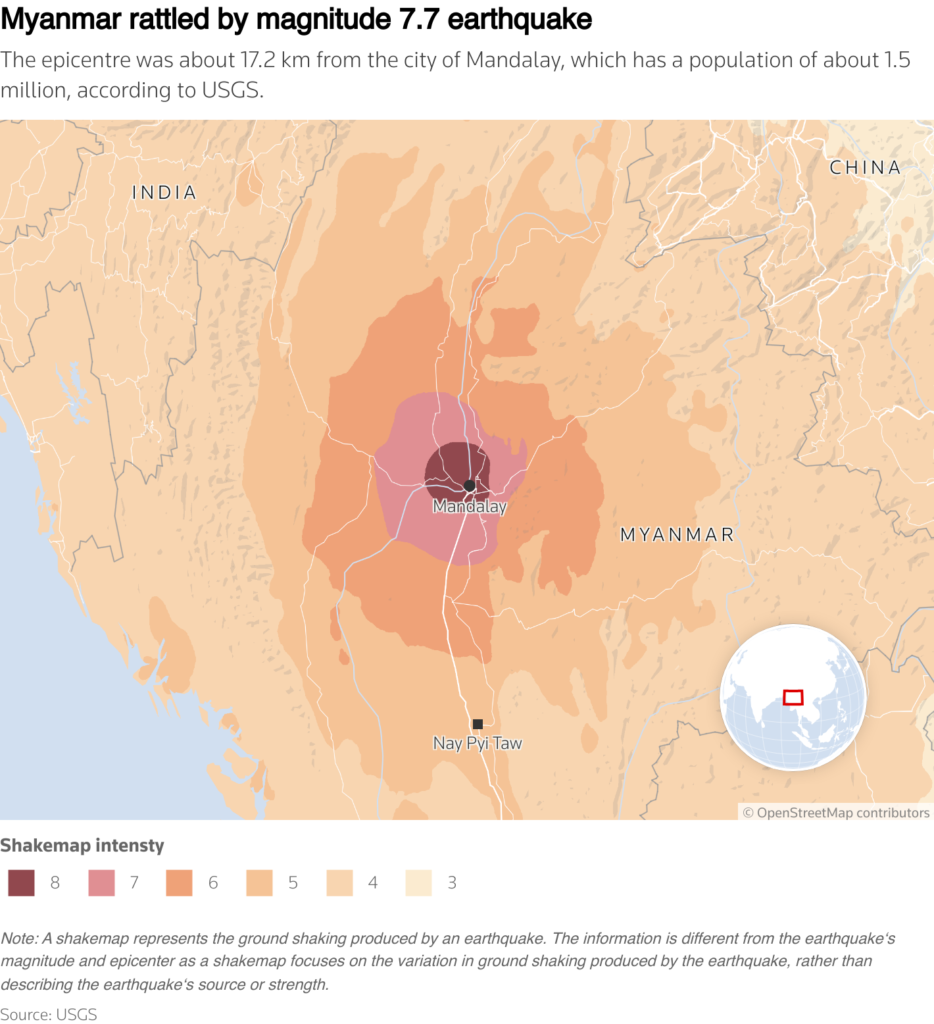Tin prices jump after earthquake hits Myanmar

Tin prices hit two-week highs in London on Friday as speculators bet that an earthquake that rocked major producer Myanmar could delay a restart of production in its main mining region.
Benchmark tin on the London Metal Exchange rose 2.5% to $36,140 per metric ton by 1508 GMT after hitting $36,635, its strongest since March 14. A break above $37,100 would take it to the highest since mid-2022.
Myanmar is the world’s third-largest tin producer and a dominant supplier to China. Mines in tin-rich Wa State, which produce 70% of Myanmar’s tin, are about 425 km (265 miles) away from earthquake epicentre, which according to the United States Geological Survey, was near the Myanmar city of Mandalay.

Reports coming out of the country about damage caused by the quake have not mentioned Wa state so far. According to the USGS map, the intensity of ground shaking near the tin mining region was 4 compared with 8 in the epicentre.
Wa state suspended all work at mines in areas it controls in August 2023 to protect resources and, according to a notice on Wednesday, was due to hold a meeting with investors in the Manxiang mining area on April 1 to discuss resumption of mining.
“The rise in LME price is likely speculatively driven, but we should get a clearer picture soon,” said Tom Langston, senior market analyst at the International Tin Association.
Tin prices have gained 24% so far this year as limited supply from Myanmar coincided with Alphamin Resources’ decision to halt operations at the world’s third-largest mine in the Democratic Republic of Congo due to the advance of rebels towards the site in mid-March.
A trader said even without the earthquake, resuming tin mining in Myanmar’s Wa State was likely to take months to fully complete, and in Congo, no legitimate mining can restart until a holistic solution to the conflict was found.
Tin inventories in LME-registered warehouses are at the lowest since mid-2023 and between 40% and 50% of tin warrants are held by one entity.
This helped to move the spread between LME cash and the three-month tin contract to a premium, which was last at $185 per ton on Friday compared with a discount of $193 at the start of March.
(By Polina Devitt; Editing by Alison Williams)
{{ commodity.name }}
{{ post.title }}
{{ post.date }}

Comments